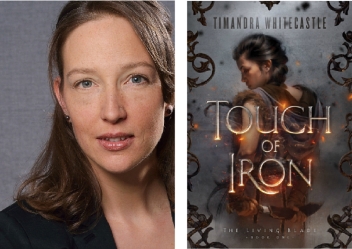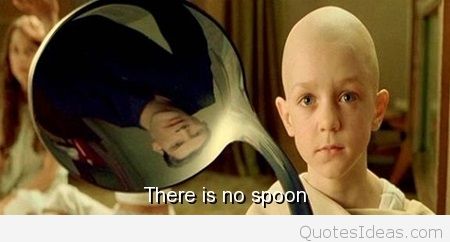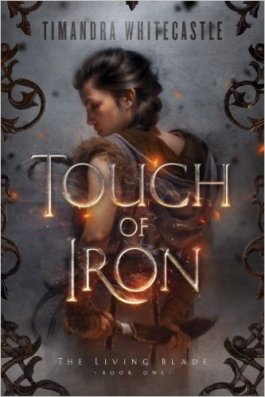Today on TheTattooedBookGeek I’m very pleased to welcome back Timandra Whitecastle for a guest post. I interviewed Timandra previously, you can find the link to the interview here. It’s a great read that’s both fun and insightful. If any of you missed it then you should definitely check it out!

Whoa. Worldbuilding
When I asked Drew what subject I could write a guest post about on his blog, he graciously told me he’d be interested in the journey from initial idea to finished book or how writers build the worlds in their book. And for a few days I thought about writing on both because they’re both great topics. But writing for me is understanding what I’m thinking because I can see it articulated on the page in front of me. And suddenly I knew I couldn’t write both. Because there was no ‘both.’

Let me explain.
I can pinpoint where my idea for The Living Blade series came from, its genesis. I’ve told it before: it came from finishing Joe Abercrombie’s Last Argument of Kings, with it’s great bookend ending of Logen Ninefingers falling off the cliff (go read the First Law trilogy, you should!). And I thought … What if …
What if there were a female hero like Logen, someone who repeatedly screws up her life (and that of those around her), but in the end she’s still someone you root for? Someone with fault lines, and breaking points, and love, and anger, and basically all the messes that we each carry around within us?
So I started with the barest sketch of a character, no name, no character sheet with ticked boxes of flaws and positive traits, no insert-casting-photo-of-who-would-play-this-person-in-dream-movie-here. I had no real plot, no setting, or worldbuilding. Instead, I thought about why it mattered to me that the hero should be a female berserker. And thinking on that, everything else – plot, and setting, and worldbuilding – fell into place. And when I looked around, I had, not a Zeus-like fistful of lightning-bolt plotpoints to hurl at the fully formed characters sprung from my head, but a handful of themes, gifted by both Calliope and the Furies. Big ones; the ones I knew truly mattered to me, and must therefore truly matter to the story, and thus the world, and thus the female hero.
So let’s talk about themes.
But first: some people will say I can’t really want to talk about something as boring as theme (I do). They’ll say, but Tim, themes are for high school essays our English teachers made us write – you write fantasy.
Tell us about the elaborate magic system you painstakingly crafted.
Tell us about the sheer mythological scope of gods and demi-gods you cast before even thinking about your main characters.
Tell us the Lore dammit, capital L.
And I roll my eyes.
Now, there are two ways you can do Theme: #1 you force-feed a reader every-fucking-thing. After all it’s your book, right? It took you so much time to figure things out, the reader should know how effin’ brilliant you actually are for thinking up all this epic stuff, shouldn’t they? If you want to infodump from page 4 to page 256 of your 500 page tome, that’s up to you, right?
Well, no. Because although it’s your book, you, as a writer, have to cater to Story.
So that only leaves you option #2: to subtly weave your theme into the story itself, you build the fabric of that imagined reality one thread at a time, one sentence at a time, until it’s saturated with it, and suddenly you have a whole new world. Recognizable, but unique.
And just like your hero, it will be flawed. And you, just like your hero, will need help. This is why, on the hero’s journey, allies step in. New characters step onto the page, humming the same tunes. Enter your editor. A good story editor will be able to identify your themes, and point out where you can tie them into your story to make it even stronger. And the best thing is, if you’ve done your job right – if both of you have done your job right – most readers won’t even notice your sleight of hand. Don’t worry. This is how it should be. Readers are smart. They’ll intuit it. And they’ll know what your book is about even without you (and your hammer) telling them. And maybe – just maybe – your theme resonates with them. I’ll tell you why in a minute.
In my world, I built my Theme into the very landscape. Into its description, right down to the choice of adjectives. In my world, I built Theme into every damn threshold my characters have to cross. (And I make sure they cross a lot.)
I deconstruct the patriarchy by constructing temples with phallic structures, towering to the skies, but that are run by powerful women.
And just to be clear, in my world, we don’t hold with Earth Mother benevolence either. Absolute power corrupts absolutely. It doesn’t give a fuck about your gender. You think having a vagina keeps you from corruption? Think again and think fast, because these cunts all have sharp teeth.
Oh, wait, you want elder races in the style of Tolkien? Behold the wisdom of our forebears. Here you go: a culture built around the veneration of those who came before, of tradition passed down, of duty because this-is-the-way-we’ve-always-done-it. The elders in my world are unsuited for adoration. In fact, they’re just as messed up as everyone else. Sometimes, they’re plain jerks.
And the gods? Yeah, well, the gods are dead, and the only living thing left of them is a blade. So beware the universal search for the Father.
The first lesson on Worldbuilding is you build the world that your themes and your story demand. The second lesson on Worldbuilding is you build the world your themes and your story fucking-well demand.
Demands can be scary. Demands mean you’re not in control as much as you liked to think you were. But fear not. See, the third, quiet lesson on Worldbuilding is … you’re already doing it. Every single day.
Seriously.
Not just writers. Everyone. Every day.
The way we see the world around us is shaped inherently by who we are, what we care about, what we value. We experience and understand the world around us only through ourselves. It’s built entirely in subjectivity. Like that other mentor said: your mind makes it real, Neo. In other words, you see the world the way it is, not because it is the way it seems to you, but because you’re the one seeing it that way. You build it. In your head. All the time (Thanks Neil Gaiman, by the way. The link to the original article canbe found here. You will spot patterns, structures, themes that seem repetitive, that creep up on you time and time again. They aren’t recurrent for everyone, of course, but just for you. Because these things resonate within you.
So, worldbuilding. I do it. And you do it, too. Every day. And maybe – just maybe – my themes resonate with yours. And when we find each other, we are astounded by the discovery of how alike we really are. This too is theme.
The only difference between writers and other people is writers are fueled by a need to replicate that subjective worldbuilding with our words. We follow the trail of an idea right to the finish by compulsion. We cater to the story. We give in to its demands. Because we yearn to connect to the truth: bending the spoon is impossible. What bends is just your reflection in it.
Touch of Iron: Volume 1 (The Living Blade).

Book Blurb:
Is the Living Blade real or just a legend?
With it… Prince Bashan could win back his kingdom.
Master Telen Diaz can free himself of the burden from his past.
Owen Smith sees a once-in-a-lifetime chance to gain untold knowledge.
… but for Noraya Smith, the Living Blade will bring nothing but suffering and sorrow.
Purchase the book here:
In some quality news for you US folks, starting today Timandra is running a Kindle Countdown Deal where the book will cost only $0.99 on Wednesday (June 15th), then merely a dollar more on each consecutive day.

Great guest post! She has some sound advice and thoughts!
LikeLiked by 1 person
Looking forward to reading this one and enjoyed the interview.
Thanks
Lynn 😀
LikeLiked by 1 person